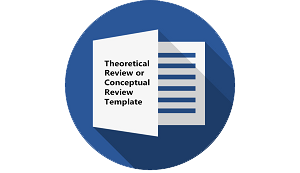Theme-Rheme Analysis in Probing Google’s Coercion Trespassing User’s Privacy; A Forensic Linguistics Research
DOI:
https://doi.org/10.30957/ijoltl.v7i1.691Keywords:
clause; constituent; forensic-linguistics; misleading-statement; privacy.Abstract
This research constitutes a mixture of multidisciplinary between linguistics with forensic. It represents the clause analysis through the use of theme-rheme in probing the user's privacy violations in Google's user privacy policy agreement: a forensic linguistics research. It is aimed to reveal and explain the violations conducted by Google to its user privacy which is implied through its text agreement by analyzing it with Theme and Rheme focus. This qualitative research is done by applying the documentation recording method in collecting data and the Halliday’s Systemic Functional Linguistics theory specifically theme-rheme. The result of the data is presented in the table analysis and in the form of descriptive interpretation.
The result showed that Google build its clauses with the 4 types of theme construction. From 73 analyzed clauses, the dominantly built clause is the single constituent with marked theme where “We†is the mostly occurred subject with 31 occurences. Yet, Google applied unmarked theme mosty in their 38 clauses. With this dominant occurences of “Weâ€, Google construe its existence as the authority holders of the whole agreement. The researchers found that similar finite predicator appeared repeatedly such “collect†and “use†in building its clauses. These constitute Google’s strategy in order to force the user’s permission to let Google freely access their privacy. In addition, the operation of the conjunction “Andâ€, extention, expansion and exemplificatory constituents represent the plentiful request of Google related to its user’s information. Those summarized the violation conducted by Google to its user’s privacy.
Downloads
References
Asya, A. (2013). Linguistic Manipulation: Definition and Types. International Journal of Cognitive Research in Science, Engineering and Education, 78-82.
Auer, P., & Schmidt, J. E. (2010). Language and Space. An International Handbook of Linguistic Variation. Theories and Method. Berlin: Walter de Gruyter GmbH & Co. KG.
Blackwell, W. (2016). Communication in Investigative and Legal Context Integrated Approaches from Forensic Psychology, Linguistics and Law Enforcement. Chichester, West Sussex: John Wiley & Sons, Ltd.
Coulthard, M., Johnson, A., & Wright, D. (2017). An Introduction to Forensic Linguistics: Language in Evidence. New York: Routledge.
Cowie, N. J. (2009). Observation. In J. Heigham, & R. Croker, Qualitative Research in Applied Linguistics (pp. 165-181). Basingstoke, UK: Palgrave McMillan.
Dictionary, O. O. (n.d.). Oxford Learner's Dictionary. Retrieved July 25, 2021, from https://www.oxfordlearnersdictionaries.com/definition/english/understand?q=understand
Green, S. P. (2001). Lying, Misleading and Falsely Denying. Hasting Law Journal, 158-210.
Gritzalis, D., Kandias, M., Stavrou, V., & Mitrou, L. (2014). History of Information: The case of Privacy and Security in Social Media. INFOHIST Legal Publications, 1-25.
Halliday, M. A. (1957). Some Aspects of Systematic Description and Comparison in Grammatical Analysis. Oxford: Basil Blackwell.
Halliday, M., & Matthiessen, C. (2004). An Introduction to Functional Grammar. London: Hodder Headline Group.
Leonard, R. A. (2017). Forensic Linguistics Applying The Scientific Principles of Language Analysis to Issues of The Law. Hostra Law Review, 881-897.
McMenamin, G. R. (2002). Forensic Linguistics. New York: CRC Press.
Moleong, L. J. (1989). Metodologi Penelitian Kualitatif. Bandung: PT. Remaja Rosdakarya.
Neuman, W. L. (2013). Social Research Methods:Qualitative and Quantitative Approaches. Harlow: Pearson Education Limited.
Olsson, J. (2008). Forensic Linguistics. London: Continuum International Publishing Group.
Sawirman, Hadi, N., & Yusdi, M. (2014). Linguistik Forensik Vol 1. Padang: Pusat Studi Ketahanan Nasional Universitas Andalas.
Shuy, R. W. (2006). Linguistics in the Courtroom: A Practical Guide. Oxford: Oxford University Press.
Shuy, R. W. (2016). The Language of Fraud Cases. New York: Oxford University Press.
Silverman, D. (2000). Analyzing talk and text’, in N. K. Denzin and Y. S. Lincoln (eds), Handbook of Qualitative Research (2nd edn). London: Sage.
Sudaryanto. (1992). Metode Linguistik Bagian Pertama ke Arah Memahami Metode Linguistik. Yogyakarta: Gadjah Mada University Press.
Zaim, M. (2014). Metode Penelitian Bahasa: Pendekatan Struktural. Padang: Sukabina Press.
Downloads
Published
How to Cite
Issue
Section
License
Authors who publish with this journal agree to the following terms:
- Authors retain copyright and grant the journal right of first publication with the work simultaneously licensed under a Creative Commons Attribution-ShareAlike 4.0 International License that allows others to share the work with an acknowledgement of the work's authorship and initial publication in this journal.
- Authors are able to enter into separate, additional contractual arrangements for the non-exclusive distribution of the journal's published version of the work (e.g., post it to an institutional repository or publish it in a book), with an acknowledgement of its initial publication in this journal.
- Authors are permitted and encouraged to post their work online (e.g., in institutional repositories or on their website) prior to and during the submission process, as it can lead to productive exchanges, as well as earlier and greater citation of published work (See The Effect of Open Access).












